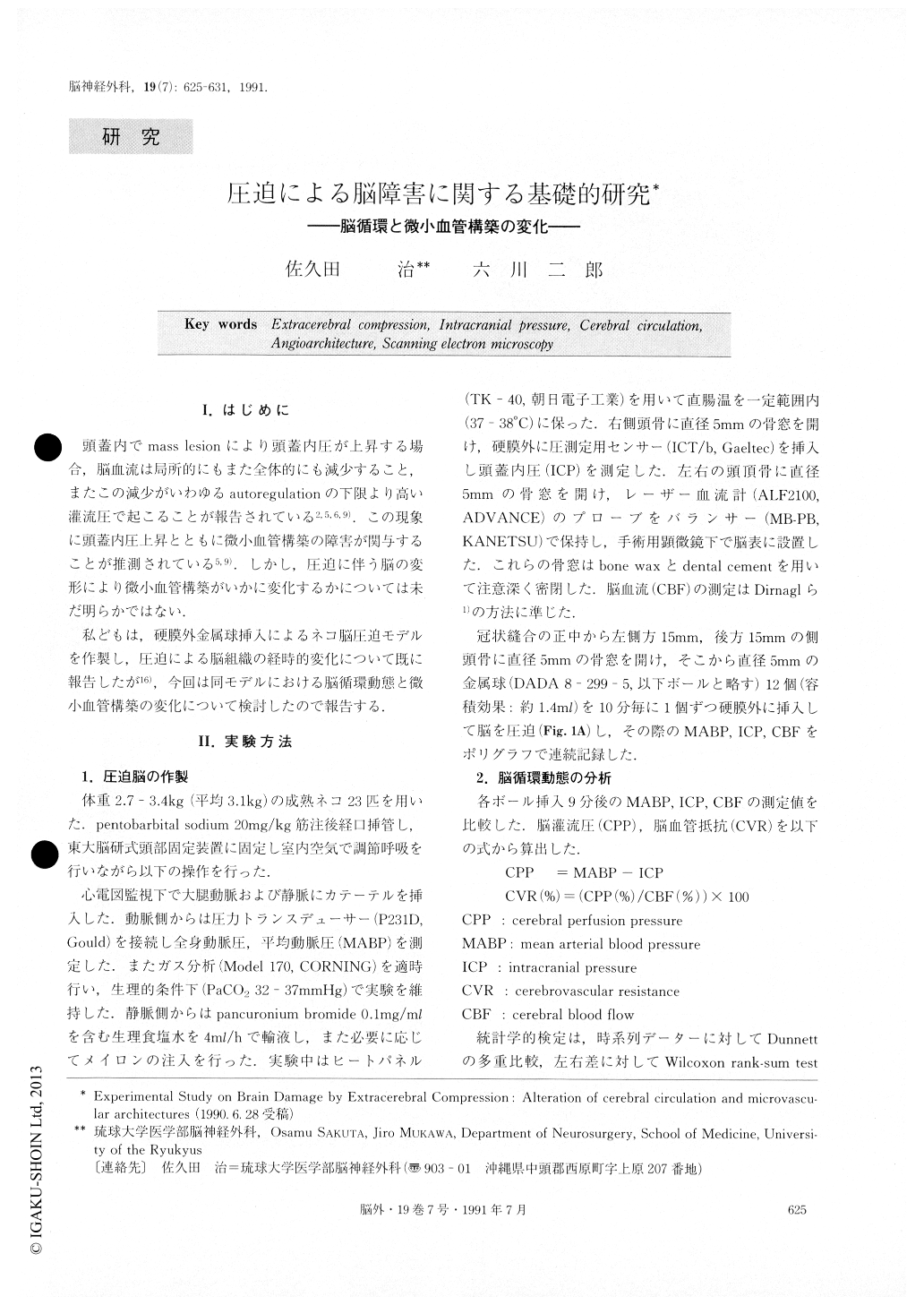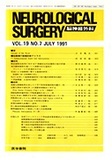Japanese
English
- 有料閲覧
- Abstract 文献概要
- 1ページ目 Look Inside
I.はじめに
頭蓋内でmass lesionにより頭蓋内圧が上昇する場合,脳血流は局所的にもまた全体的にも減少すること,またこの減少がいわゆるautoregulationの下限より高い灌流圧で起こることが報告されている2,5,6,9).この現象に頭蓋内圧上昇とともに微小血管構築の障害が関与することが推測されている5,9).しかし,圧迫に伴う脳の変形により微小血管構築がいかに変化するかについては未だ明らかではない.
私どもは,硬膜外金属球挿入によるネコ脳圧迫モデルを作製し,圧迫による脳組織の経時的変化について既に報告したが),今回は同モデルにおける脳循環動態と微小血管構築の変化について検討したので報告する.
Abstract
Effects of extracerebral compression on cerebral cir-culation and microvascular architectures were investi-gated in 23 adult cats. Brain compression was produced by inserting 12 steel balls (5mm in diameter) into the extradural space through a burr hole at the left tempor-al bone. One ball was inserted every 10 minutes. Mean arterial blood pressure (MABP) , intracranial pressure (ICP) and cerebral blood flow (CBF) were measured continuously. Cerebral perfusion pressure (CPP) and cerebrovascular resistance (CVR) were then calculated. Microvascular architectures of the brain were studied by scanning electron microscopy (SEM) with cerebro-vascular casting methods.
CBF decreased significantly on the compressed side though CPP remained unchanged till 5 balls had been inserted. CVR increased correlatively to the numbers of balls on the compressed side while remaining un-changed during insertion of the balls on the contralate-ral side.
In SEM study, flection and interruption of capillaries and compressed phenomenon of veins were most re-markable on the compressed side. Alterations of micro-vascular architectures correspond to cortical deformity in degree.
These data show that increase of CVR correlating to alteration of microvascular architectures plays an im-portant role in decrease of CBF in a compressed brain. It is thus suggested that intracranial mass lesion caus-ing deformity of the brain must be removed in order to avoid further brain tissue damage due to microvascular lesions.

Copyright © 1991, Igaku-Shoin Ltd. All rights reserved.


